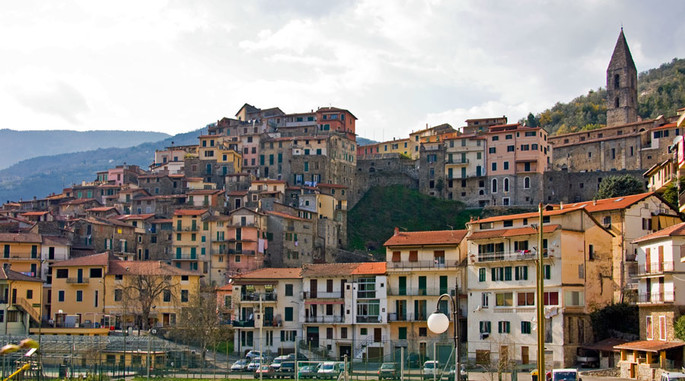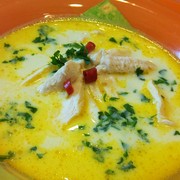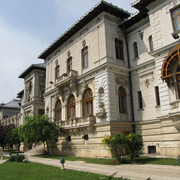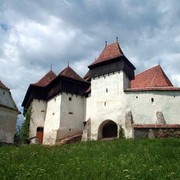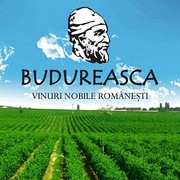Pigna is an Italian town of 896 inhabitants of the province of Imperia in Liguria. The town has been awarded, since 2009, the Orange Flag by the Touring Club Italiano. Pigna derives from homonymous Pignata from Pegognaga.
Geography
The locality, including the fraction of Buggio, is located in the mountainous part of the upper Val Nervia. It is about 62 km from the capital. The country is crossed by the river Nervia from north-east to south-east at an altitude of about 200-300 meters above sea level.
History
Recently were found traces of primitive human settlements dating back to prehistoric times, therefore historians assume that the primitive village of Pigna may have been a part of the town Albintimilium, today Ventimiglia. A settlement of the Roman times was instead discovered at the site where today stands the Benedictine church of St. Thomas.
Historically the first official news dating from the twelfth and thirteenth centuries when counts of Ventimiglia, lords of the valley, erected a castle for defensive purposes. The choice of the location of the manor was very strategic for counts Ventimiglia as it stood at the junction of the road that led from Ventimiglia to Triora, linking the coast with inland Liguria and Piedmont-Nice.
From the thirteenth century the feud was subjected to the counts of Provence - who conceded it to the county of Nice - set itself free in municipality by entering into agreements for agricultural and pastoral land with the neighboring municipalities of Castel Vittorio, Triora, Apricale, Dolceacqua, Saorge and Brig, the latter now in French territory.
Between the thirteenth and fourteenth centuries, the village and the whole valley Nervia suffered clashes between the Guelph and Ghibelline factions, and in particular the territorial disputes between the Kingdom of Provence and the Republic of Genoa. In 1365 at the bridge of Lake Pigo peace was restored in the valley.
In 1388 the governor of Provence submitted the lands of Pigna to Amedeo VII of Savoy, as attests an official document preserved in the municipal archives. In the seventeenth century it passed into the territories of the Republic of Genoa, to which it was linked until its fall in 1797. The territory became part of the Ligurian Republic and the subsequent First French Empire (1805) of Napoleon. The Congress of Vienna established the passage to the Kingdom of Sardinia (1815) as well as other towns in Liguria which were part of the former republic of Liguria. Since 1861 it was an integral part of the Kingdom of Italy.
In 1944, during the Resistance, it was proclaimed the "Free Republic of Pigna in Val Nervia" which was characterized by its own democratic systems and broad popular participation, existed from August 29 to October 8 of that year. The republic, defended by Garibaldi partisans under the command of William Vittorio "Vito", capitulated after fierce fighting, which began on October 4.
From 1973 until April 30, 2011 has been part of the mountain community Intemelia latter suppressed by the Regional Law n ° 23 of 29 December 2010 and in force since 1 May 2011.
Monuments and places of interest
Religious Architecture
. Parish Church of San Michele Archangelo,
in the center of Pigna. The interior consists of three aisles separated by two rows of circular and octagonal columns. Behind the altar is placed the famous altarpiece, called Polittico of the painter Giovanni Canavesio 1500, comprising thirty-six compartments framed by a wooden, golden frame in Renaissance style. The painting, high four meters and a half, therefore considered the largest in western Liguria, depicts St. Michael slaying the devil in order to steal his soul from the scales.
. Church of San Bernardo,
built in the late fourteenth century and the beginning of the fifteenth century, perhaps over an earlier structure, along the old path road linking Sanremo, Bajardo, Pigna, Saorge and Tenda. The church was officially opened on April 5, 1998 after an internal restoration.
. Sanctuary of the Madonna of Passoscio,
also known under the name of the shrine of the Annunciation, located outside the town about an hour's drive from it. Along the way there are fifteen chapels recalling the stages of Christ's passion. In ancient times here were preserved two important and valuable works of art such as a painting of the Deposition and the Annunciation of the painter Carlo Maratta. The first work is now preserved in Genoa, while the second is now present in the parish church of San Michele. In the adjacent convent there are preserved hundreds of votive commissioned or donated by the inhabitants of Pigna.
. Oratory of St. Anthony Abbot.
The building's façade is in baroque style and in the oratory is an old fountain called "the Canui", already present in a document of municipal statutes of 1575.
. Church of St. Thomas.
The old church is located about one kilometer from the town and according to local tradition was founded by Benedictine monks in the XI century.
Civil architectures
. Rifugio Franco Allavena.
The refuge Franco Allavena, also called "shelter Melosa" is a refuge owned by the CAI of Bordighera located in Colle Melosa at 1,545 m above sea level in the town of Pigna on the south-east slope of Mount Grai (2,014 m) and not far from the French border and from the watershed between the Val Roia, Nervia valley and valley Argentina. [An article about hiking/cycling itineraries will follow]
. Thermal and wellness center
The benefits of sulfur water at 31°C , are known in Pigna since 1200.
Nowadays a great, high standard center (including hotel) welcomes people from everywhere.
Events
The "Raviolata of St. Tiberio" which is held every year on 10th October. The culinary event recalls an ancient tradition that at the time of the Saracen raids on the coasts of Liguria, they have repeatedly tried to enter the village of Pigna, and during one of the sieges Pignaschi decided to collect all the oil that was hold in large containers, warmed it up and overthrew the content boiling on the invaders who finally beat a retreat never more trying to storm the country. At this point the inhabitants of Pigna decided to celebrate their victory with a great banquet of their dish, the ravioli, but not having the oil to season them, they ate without dressing, only with pecorino cheese. This anniversary is commemorated each year on October 10 ancient day when the saint was celebrated, hence the name of the event.
Persons linked to Pigna: Carlo Fea (Pigna, 1753 - Rome, 1836), archaeologist and art collector.
Economy
The main economic activity of the town is based on agriculture, especially olive growing.
Famous across the border region are beans that represent an important opportunity to supplement their income derived from farming. The particular cultivation, soil and spring water, allow to obtain a product particularly appreciated by gastronomic experts and gourmet also across the border. Recently it created a consortium of white bean of the Ligurian Alps that aims to protect and spread Pigna, Badalucco and Conio (fraction of Borgomaro) beans. It is a Slow Food product. [An article about this subject will follow]
Also important tourism activity linked to health tourism.
Transportation
Pigna is situated along the provincial road 64 which links Ventimiglia with Castel Vittorio. The municipality is not directly accessible by highway, so the highway exits Ventimiglia or Bordighera on the A10 highway are recommended to reach the destination.
The railway station of Ventimiglia is the nearest train stop on the line Ventimiglia-Genoa in the local stretch between Ventimiglia and Savona.

